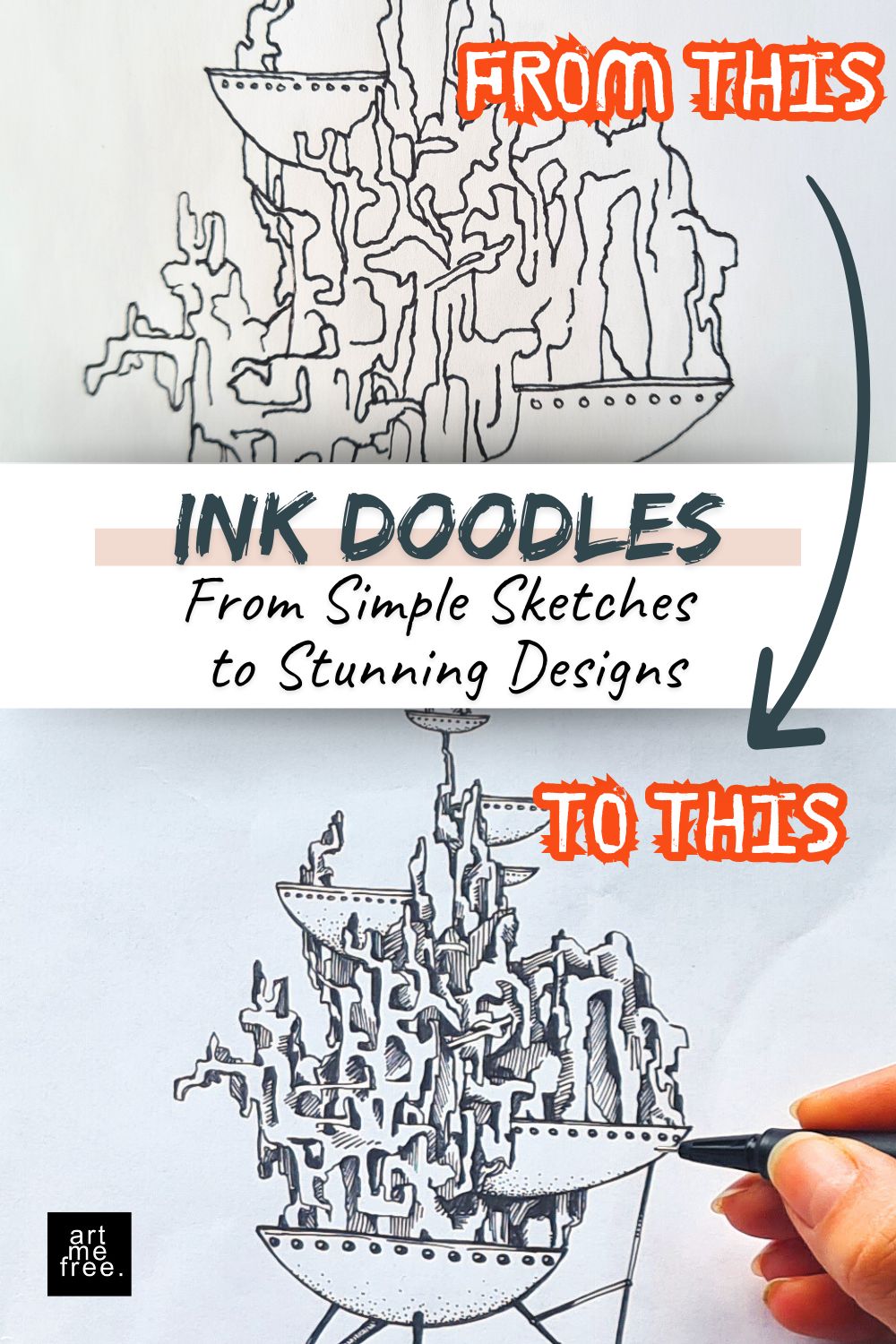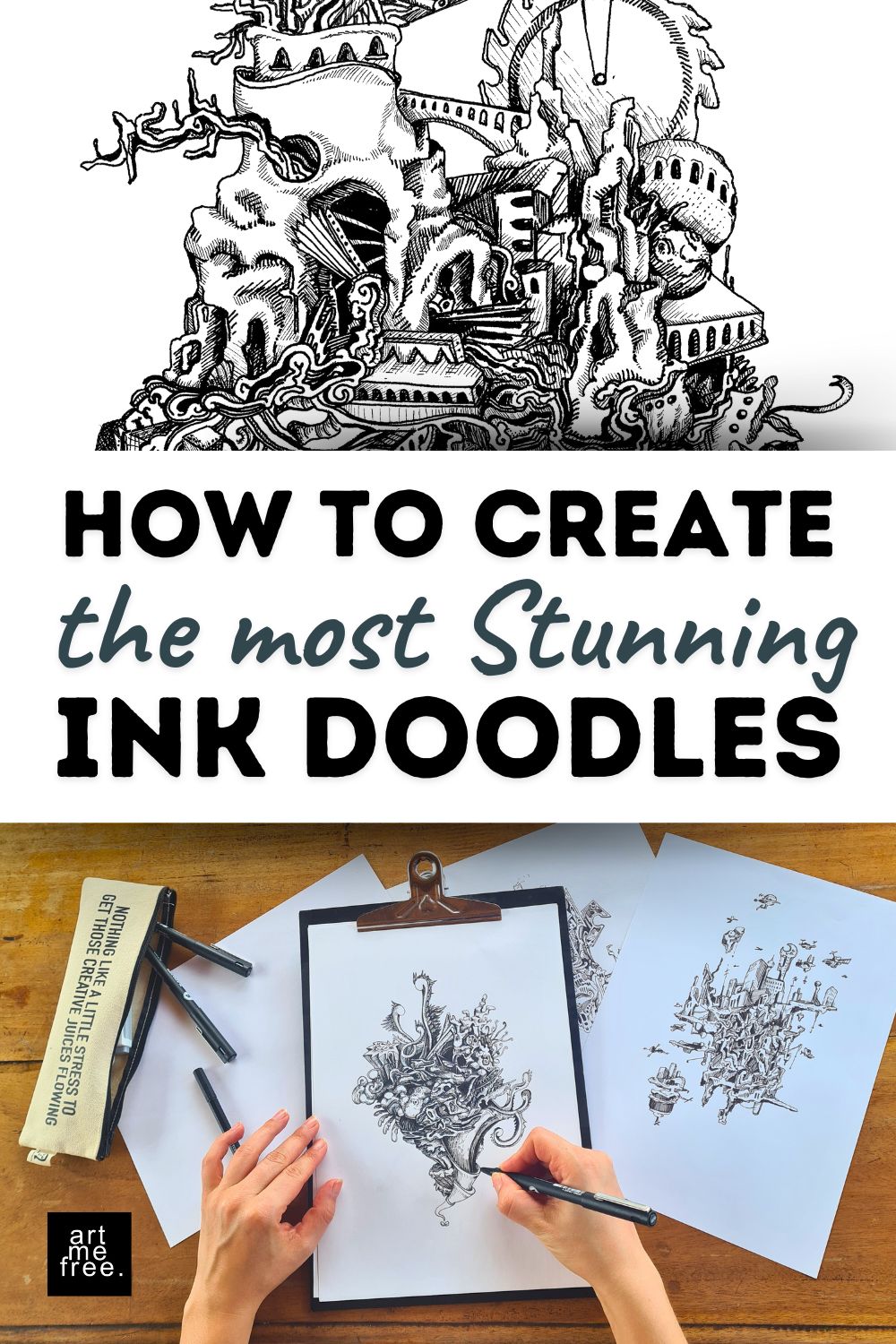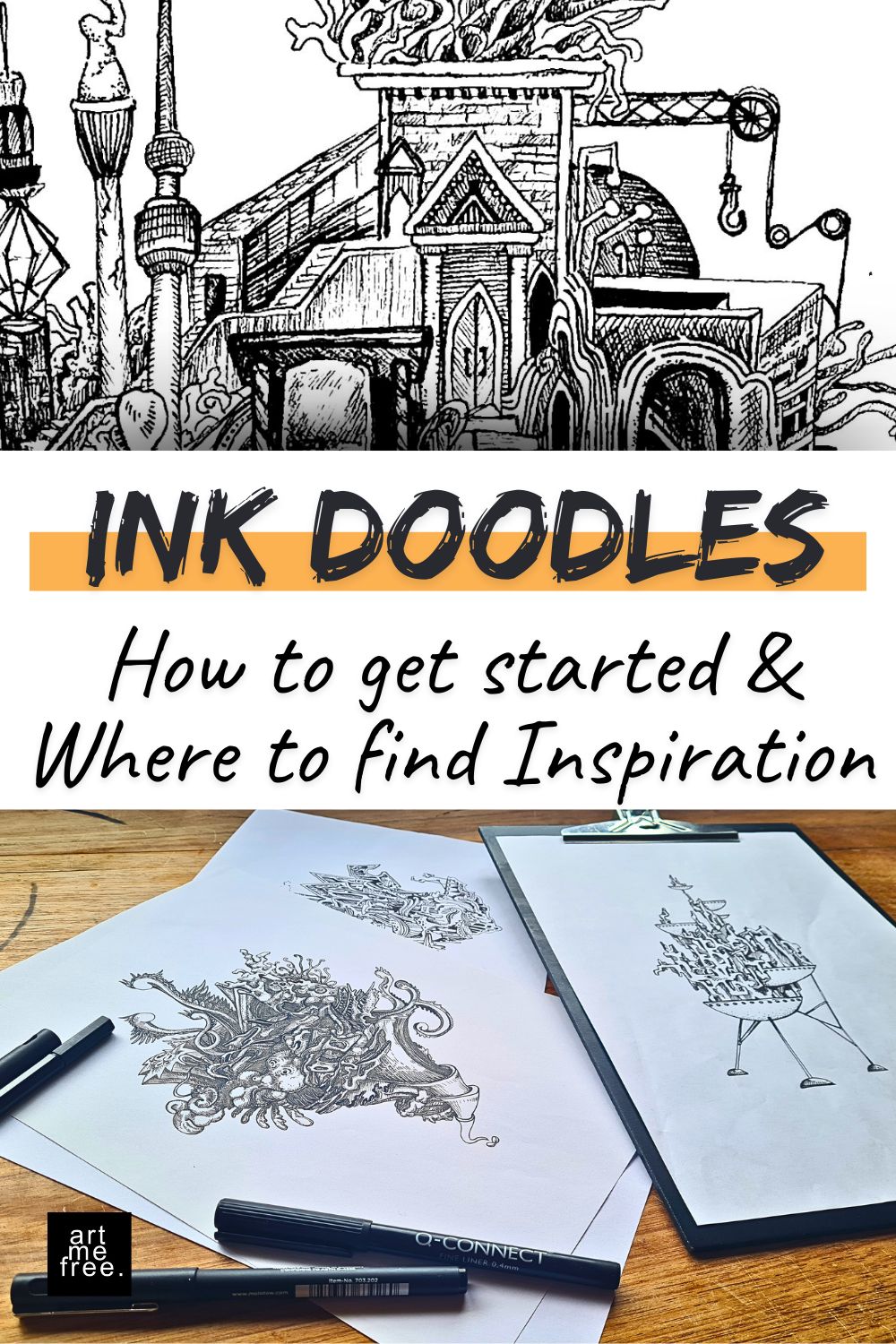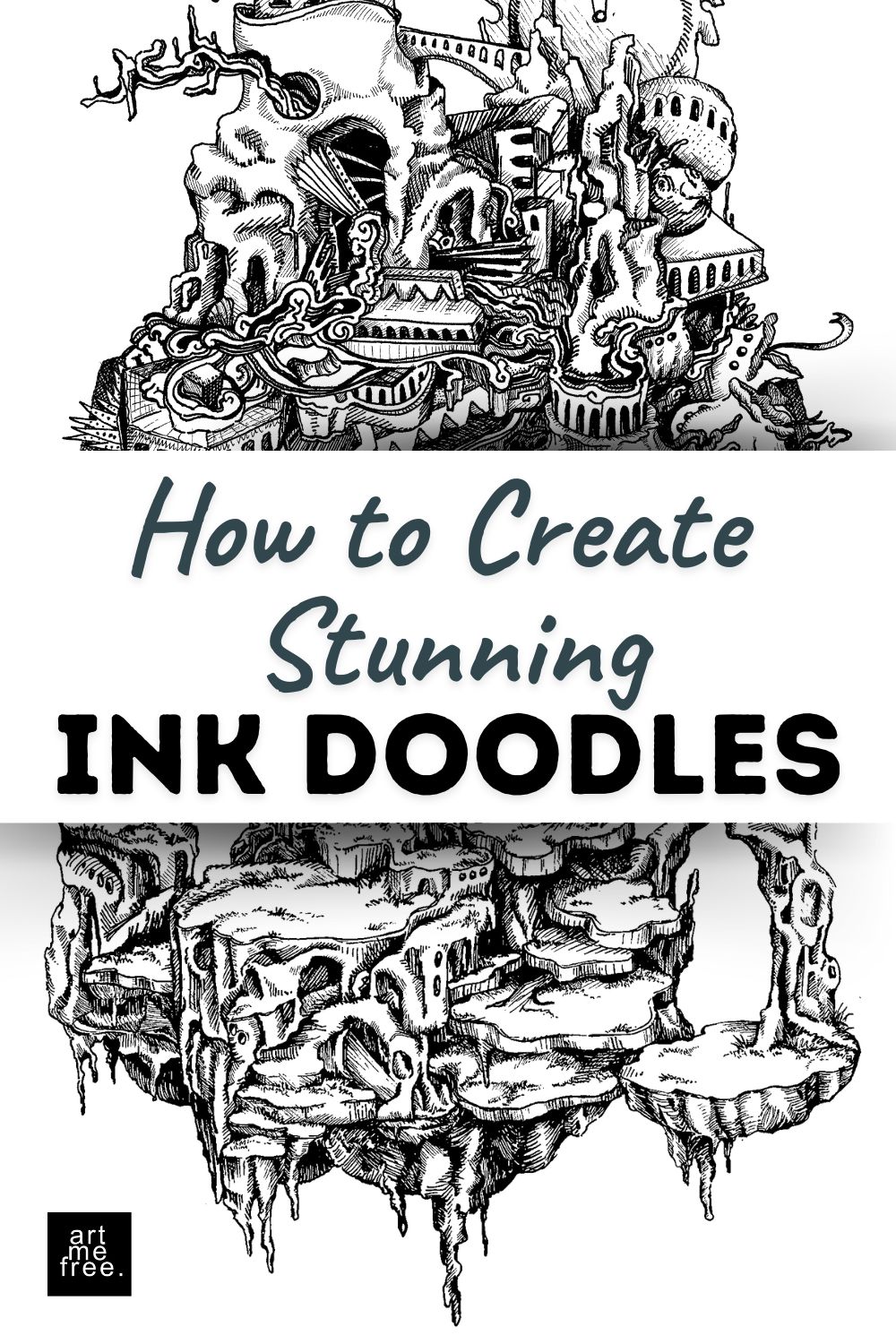
If you’re new to doodling, check out Doodle Drawings: How to Get Started in Easy Steps for more beginner-friendly insights.
Ink doodles are one of the most accessible and free-flowing forms of artistic expression. They don’t require expensive tools, and the simplicity of working with ink makes it a great medium for unfiltered creativity.
For more thoughts on why perfection isn’t necessary in art, check out 5 Reasons Perfection in Art Is Overrated.

At artmefree, my doodling process is spontaneous and unplanned. I rarely start with a specific idea in mind—instead, I let the lines guide me. The drawings often feature a mix of organic and mechanical shapes, blending natural curves with industrial-inspired details. I like using different line weights to create depth and movement, and I avoid erasing, allowing each piece to evolve naturally.
My method is about free creativity without overthinking—letting the pen take control and seeing where the design leads. If you’re interested in seeing how this approach comes to life, visit the artmefree gallery, where many of my ink doodles have transformed into intricate final pieces.
Doodling is a fun and relaxing way to explore creativity, and now you can start your journey with my free workbook!
The Art of Doodling is a printable workbook designed to help you discover and improve your art skills, no experience needed. At artmefree, it’s all about embracing creativity in a simple, enjoyable way, whether you’re just starting out or looking for fresh inspiration.
16 pages packed with fun doodling exercises ✨
Helps improve and level up your drawing skills ✏️
Features pattern ideas and step-by-step guides 🗒️
Includes examples alongside open space to explore 🎨
Download it now and start doodling!
Ink doodling can take many forms depending on the tools and techniques you choose. Here are some common approaches:

For more doodling elements and ideas, check out The Ultimate Guide to Drawing Ideas and Doodling Elements, where I break down different shapes and patterns to incorporate into your drawings.
Doodling is a fun and relaxing way to explore creativity, and now you can start your journey with my free workbook!
The Art of Doodling is a printable workbook designed to help you discover and improve your art skills, no experience needed. At artmefree, it’s all about embracing creativity in a simple, enjoyable way, whether you’re just starting out or looking for fresh inspiration.
16 pages packed with fun doodling exercises ✨
Helps improve and level up your drawing skills ✏️
Features pattern ideas and step-by-step guides 🗒️
Includes examples alongside open space to explore 🎨
Download it now and start doodling!
If you’re unsure where to start, here are a few ways to spark fresh ideas:

While ink doodles often start as small sketches, they can evolve into full compositions or even finished art prints. Here are some ideas:
If you’d like to see how ink doodles can transform into art prints, apparel, and more, check out the artmefree shop, where my hand-drawn designs are featured.
Ink doodles are a fun and freeing way to explore creativity, whether you’re sketching casually or refining a unique artistic style. There’s no right or wrong approach—whether you prefer fineliners, brush pens, or liquid ink, the key is to enjoy the process and let your ideas evolve naturally.
I’d love to see your ink doodles! Tag #artmefree on social media and share your work. And if you’re looking for more creative inspiration, visit the artmefree gallery to see how simple doodles can evolve into detailed works of art.
Happy doodling!



To provide you with an optimal experience, we use technologies such as cookies to store and/or access device information. If you consent to these technologies, we may process data such as browsing behavior or unique IDs on this website. If you do not give or withdraw your consent, certain features and functions may be impaired.